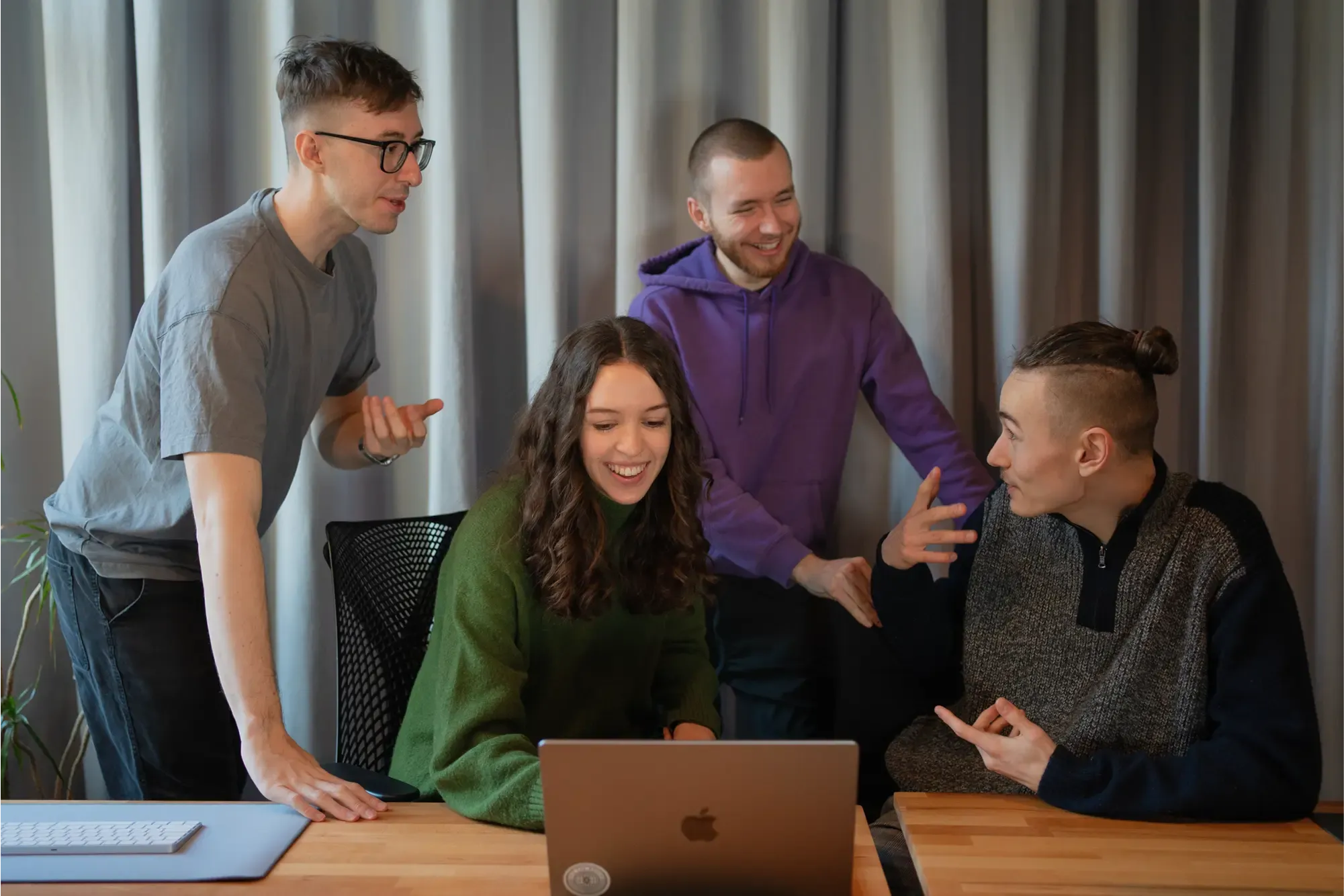Silas Wolf DESIGNER
Experience

I am an UI/UX Designer and Frontend Developer based in Potsdam Germany. I am engineering data driven software and fascinating web experiences with a focus on inclusion, usability and sustainability.
I earned my BA in Interfacedesign at the University of Applied Sciences Potsdam. Since 2020, I have worked as a freelance graphic designer and later as a UX/UI designer. My clients have ranged from cultural institutions and small startups to large corporations.
Freelance Work
Deutsche Oper am Rhein
Aug 2020 → Jun 2023
Coach Inside
together with metchmetrics
Feb 2022 → Apr 2022
Mate
Nov 2022 → Dez 2023
DB-Maps, DB-RISK & DB Reisendenkarte
together with futur2
Feb 2020 → Okt 2024
and many more…
Honorary mentions
In 2022 together with Tilmann Finner we won the
Visualising Cities Award in the student category for the project
»A Town for All!«.
Design Studio

Together with my colleges Hanne Dahlmann, Carl Linz and Eric Wätke we are running the design and development studio woven.
With wovon we interweave design and development and thus avoid the biggest pain point in development. We have experienced ourselves on several occasions that in larger product teams, information often gets lost as it moves from design to code. Because we all design and develop, we have more control over the result, save time, increase quality and can focus on details.
Visit us here
Thesis

In the wake of increasing social polarization and growing criticism of centralized, profit-oriented social networks such as X, Threads or Bluesky, the decentralized network Mastodon is increasingly coming into focus as an alternative that is oriented towards democracy and the common good. Despite its structural advantages, such as federated infrastructure, user-supported instances and open standards, Mastodon has so far remained a niche platform. The main reasons for this are the complex underlying structure, unfamiliar terminology, a lack of knowledge about the social rules, weak user guidance and a lack of discovery mechanisms for new posts.
This thesis analyzes these challenges based on data from the migration from Twitter to Mastodon that took place in late 2022 and early 2023. The aim is to develop a conceptual design for an alternative iOS Mastodon client based on these findings.
The designed Mastodon client PONDS including a general instance PONDS.SOCIAL combines familiar UI patterns of known platforms with the federated Mastodon structure. To enable low-threshold use, the instance selection is initially hidden in the onboarding process and a central general instance is offered as a starting point. Gamification elements, user-tailored feeds, algorithm-like suggestions and the visual highlighting of instances create an activating user experience that is aimed at both exploration and long-term retention. A migration assistant and a transparent community system are specifically promoted with a networking score. Users should gradually learn to understand and use the federated logic of the platform.
Teaching
At the beginning of my studies I gave a few animation tutorials, later I initiated two meetup series Creative Media and Creative Coders. In the former, we spent a semester every week dealing with various multimedia creation tools - including AI tools that were still very poorly functioning at the time. In the second, we organized an internal university meeting on the topic of creative coding and facilitated a workshop every few weeks. In fall 2022, I discovered the book CAPS LOCK by Ruben Pater at the Dutch Design Week in Eindhoven. It had won a Dutch Design Award that year. The book deals with the entanglements of graphic design and capitalism and emphasizes the driving role of design.
Since I think this topic is incredibly important and didn’t feel that it had enough space in our teaching, I offered a course based on the book in the winter semester 2022/23. On a theoretical level, we dealt with the content of the book and tried to transfer what we had learned into anti-capitalist design practice. To do this, we contacted non-profit organizations and looked at how we could support them with our expertise. The course was very well received and there was a high level of participation, as the urgency of this topic has so far hardly featured in our teaching. Three semesters later, I offered another course on the book, but this time with the further task of founding a system-critical design network (Collective Change) on this basis.
To my knowledge, this makes me the first student to teach a fully-fledged course in our department. However, teaching is a bit of a stretch, my courses were based on a maximum of student participation and I only brought the basic framework.
Visit our Design Network
We are unstoppable. Another world is possible.